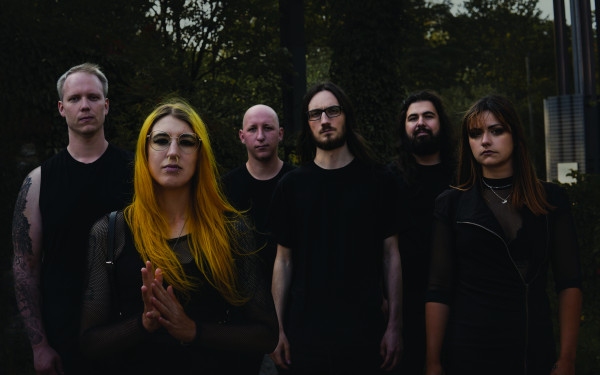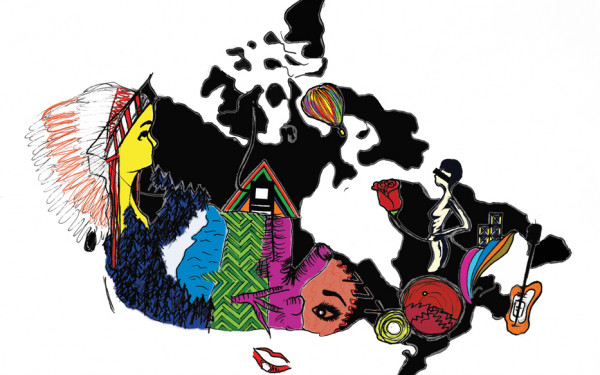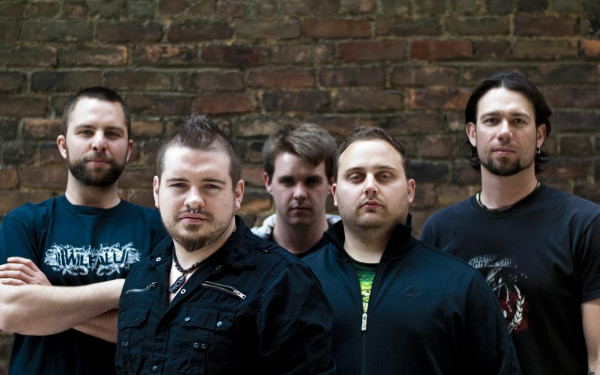Bringing the Underground to Light
Grimposium Conference Brings Extreme Metal to Concordia
Concordia is about to get a heavy dosage of “trve kvlt” arts through both an artistic and academic look at the extreme metal scene.
Vivek Venkatesh, the associate dean for academic programs and development at the School of Graduate Studies, is organizing Grimposium, which is set to take place on April 11 and 12.
Venkatesh, who is also an associate professor in the educational technology program at Concordia, said the event will feature many different stakeholders discussing metal in its various forms.
“You’ve got films; you’ve got artwork, musicians, musicologists and journalists all talking about extreme metal over the course of two days,” he said.
“It’s an opportunity to engage with the major players on the scene. Let’s not make any mistakes about this, the people here are so kvlt, it is an honour to be with them.”
With its plethora of topics and speakers, the event manages to include both international stakeholders and those who contribute to the scene locally.
“Grimposium is a way for me to recognize the extreme metal scene and what it has given me as an academic,” Venkatesh said. “I want Grimposium to be a place where the scene members who I value the most are put at the forefront.”
The poster itself is an ode to the international scene. Designed by local artist Filip Ivanovic, the artists and speakers are listed with their respective countries next to them.
“Vivek and his team at Concordia have really made an incredible contribution to the growing field of metal studies by organizing this conference,” said Jason Netherton, the bassist and vocalist of the deathgrind band Misery Index.
“Because it is so inclusive of the artists and fans as well as the academics […] it will really contribute to a vibrant atmosphere that sets it apart from other conferences,” he said.
Notes From the Underground
Venkatesh himself is publishing in the expanding field of metal studies.
“I have a paper coming out in a social psychology and community journal where we look at why black metal fans detest community and they set aside anything social to promote individualism,” he said.
“There’s a very atheistic satanic element to it.”
Aside from being a part of his band, Netherton is an academic as well.
“My primary interest is with the political economy of music in general,” he said. “However, with the metal scene I have become very interested in the media of the underground specifically—from the early fanzines, art and tape-trading culture to its means of communication and networking.
“In general, I want to explore how the scene produces the artifacts of meaning that give it ‘life,’ and how this media becomes central to notions of authenticity and how such notions change with time and technology,” he continued.
Netherton is launching a book at Grimposium called Extremity Retained: Notes from the Death Metal Underground. By compiling and editing interviews of 105 “notables” from the death metal scene, Netherton has sought to preserve history and create an interesting read for fans and academics alike.
“Let’s Infect Everyone with Satan”
Extreme metal should not be confused with the more popular and well-known heavy metal.
Many subgenres of metal, including glam metal, power metal and even thrash metal, have managed to increase their popularity and become commodified over time. Extreme metal, in a way, formed as a reaction to this.
“What differentiates extreme metal from heavy metal would really be the fast A-tonal riffing of the guitars, extreme distortion, the inhuman vocals, the whole growling and screeching effects,” Venkatesh said.
“Then to a certain extent the lyrical content: hostility, violence [and] in the case of black metal, suicide, anti-Christianity, Satanism and then a lot of individuality.
“It’s what keeps it underground.”
Both the notions of authenticity and elitism are prevalent themes and heavily debated topics within the extreme metal scene. In fact, there is a panel specifically on this topic. Simply defining the many facets of metal seems to be an arduous process contributing to the meaning of the conference and various panels.
Grimposium brings an aspect of trve kvlt metal to posers and non-posers alike. While some individuals may argue it brings too much exposure to the scene, Venkatesh argues he maintains guardianship of what he perceives to be “authentic and extreme metal.”
If people are willing to embrace the metal, the conference will provide them with something to learn and enjoy. It’s an event that allows individuals to learn directly from the scene.
“Want to watch an experimental film about extreme metal? We got that,” said Venkatesh. “Want to watch a documentary about how people in Puerto Rico are dealing with gender, racism, and identities around heavy metal? We got that. Want to listen to the editor of the biggest extreme metal magazine in the world talk about the trials and tribulations of setting up an extreme metal tour? He’s there.”
Concordia University and Venkatesh have managed to create a forum that can communicate that the extreme metal scene is not just a place for people to get “violent and ugly.”
“Underground extreme metal is a scene that is very much alive and ticking,” Venkatesh said. “It’s propagated by the musicians, by the visual artists, […] by the journalists, the music writers, the bloggers, and the filmmakers.
“I promise we won’t call out posers too quickly in the day.”
Grimposium // April 11 and 12 // 9 am to 5 pm // J. A. De Sève Cinema, LB Building (1400 De Maisonneuve Blvd. W.) // Free

2_827_1050_90.jpg)
_600_832_s.png)



